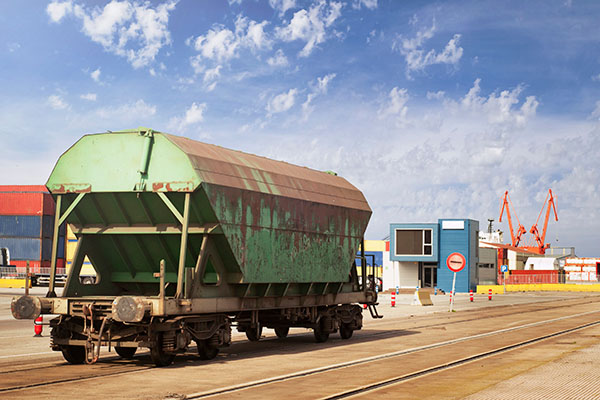AAR’s Hamberger lauds progress of Positive Train Control at House hearing
As the late December deadline for the implementation of Positive Train Control (PTC) by United States railroads gets closer, the overall outlook for PTC looks encouraging.
As the late December deadline for the implementation of Positive Train Control (PTC) by United States railroads gets closer, the overall outlook for PTC looks encouraging.
That was the official word from Ed Hamberger, president and CEO of the Washington, D.C.-based Association of American Railroads (AAR).
“The bottom line is that by December 31, 2018, all Class Is will have completed PTC hardware installation, trained all employees, and secured all needed radio bandwidth,” Hamberger said in his testimony in front of the House Committee on Transportation and Infrastructure Subcommittee on Railroads, Pipelines and Hazardous Materials last week. “Further, by the end of this year, PTC will be in operation on the vast majority — approximately 80 percent — of Class I PTC route-miles network wide, with some Class I railroads planning to be fully operational on their networks. Between 2018 and 2020, all Class I railroads will be completing PTC implementation, consistent with the statute.”
The AAR’s top executive added that all railroads will continue their work on resolving technical operational challenges that will inevitably rise, which Congress anticipated and specifically provided flexibility for in its 2015 law. He added that they also will be addressing the biggest remaining challenge of PTC implementation: interoperability with each other and with their tenant passenger and shortline railroads.
Railroads are required by law to have PTC installed by December 31, 2018, which is past the original deadline of December 31, 2015, which the Association of American Railroads said was arbitrary and unworkable and riddled with technical and legal complexities, as well as railroads and freight rail shippers stressing there would be serious consequences for the nation if the deadline was not extended.
The objective of PTC systems is to prevent train-to-train collisions, overspeed derailments, and incursions into roadway work limits. PTC sends and receives a continuous stream of data transmitted by wireless signals about the location, speed, and direction of trains, according to the Federal Railroad Administration (FRA). PTC systems, added the FRA, utilize advanced technologies including digital radio links, global positioning systems and wayside computer control systems that aid dispatchers and train crews in safely managing train movements.
A mandate for PTC systems was included in House and Senate legislation-The Rail Safety and Improvement Act of 2008. The legislation was passed after a September 12, 2008 collision between a freight train and a commuter train in Los Angeles. PTC has received renewed attention, following a tragic Amrtak accident in the Philadelphia area in 2015. As per the mandate, the December 31, 2015 deadline required freight railroads to install Positive Train Control (PTC) technology on 40 percent of its network.
Hamberger explained that while PTC development and implementation represents an unprecedented technological challenge, Class I railroads have made “tremendous progress,” (through the end of July) including: having 98.2%, or 16,077 locomotives equipped and PTC operable: 99.1%, or 91, 826, employees trained; 99.2%, or 27,857, wayside interface units installed; 99.8%, or 14,895, radio towers, installed; and 69.7%, or 37,435, PTC miles in operation.
Based on AAR estimates, he said that freight railroads have invested more than $10 billion of their own funds, not taxpayer funds, in PTC development and deployment, and expect to spend more than $11 billion by the time PTC is fully operational, excluding the hundreds of millions of additional dollars that will be needed annually to maintain these PTC systems once they are additionally installed.
The pace of PTC implementation has been largely viewed as “uneven” from freight railroad stakeholders both before the original December 31, 2015 deadline and this new December 31, 2018 deadline. PTC has been commonly referred to as the “unfunded mandate” in railroad circles. A major concern of freight railroads has been that PTC rules finalized in January 2010 required PTC on sections of tracking where the cost is not justified, according to a March 2011 Wall Street Journal report.
Tony Hatch, president of New York-based ABH Research, said in an interview that it is unlikely PTC will have an impact on railroad service in the intermediate term.
“In the long term, the goal, which is something Norfolk Southern previously said, is to move this from the unfunded mandate to the backbone of the new digital railroad,” explained Hatch. “At some point, this is going to help by being a better communications device or a real-time communications device. It is something that will help railroads with predictive maintenance, which will help service, as it will reduce failures and will help with visibility and that also improves service. There are all sorts of customer-facing and non customer-facing things where this can be a real help.”













